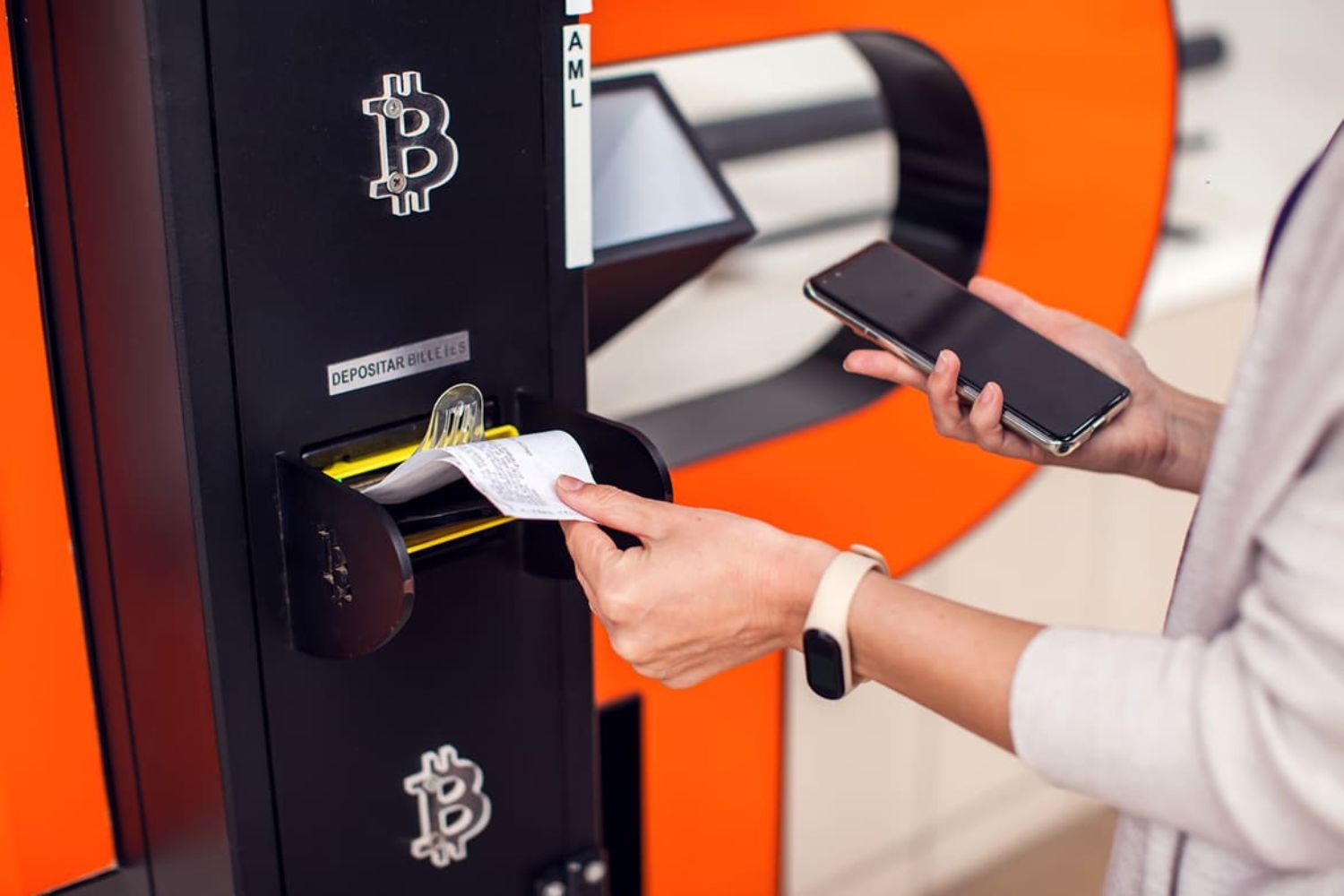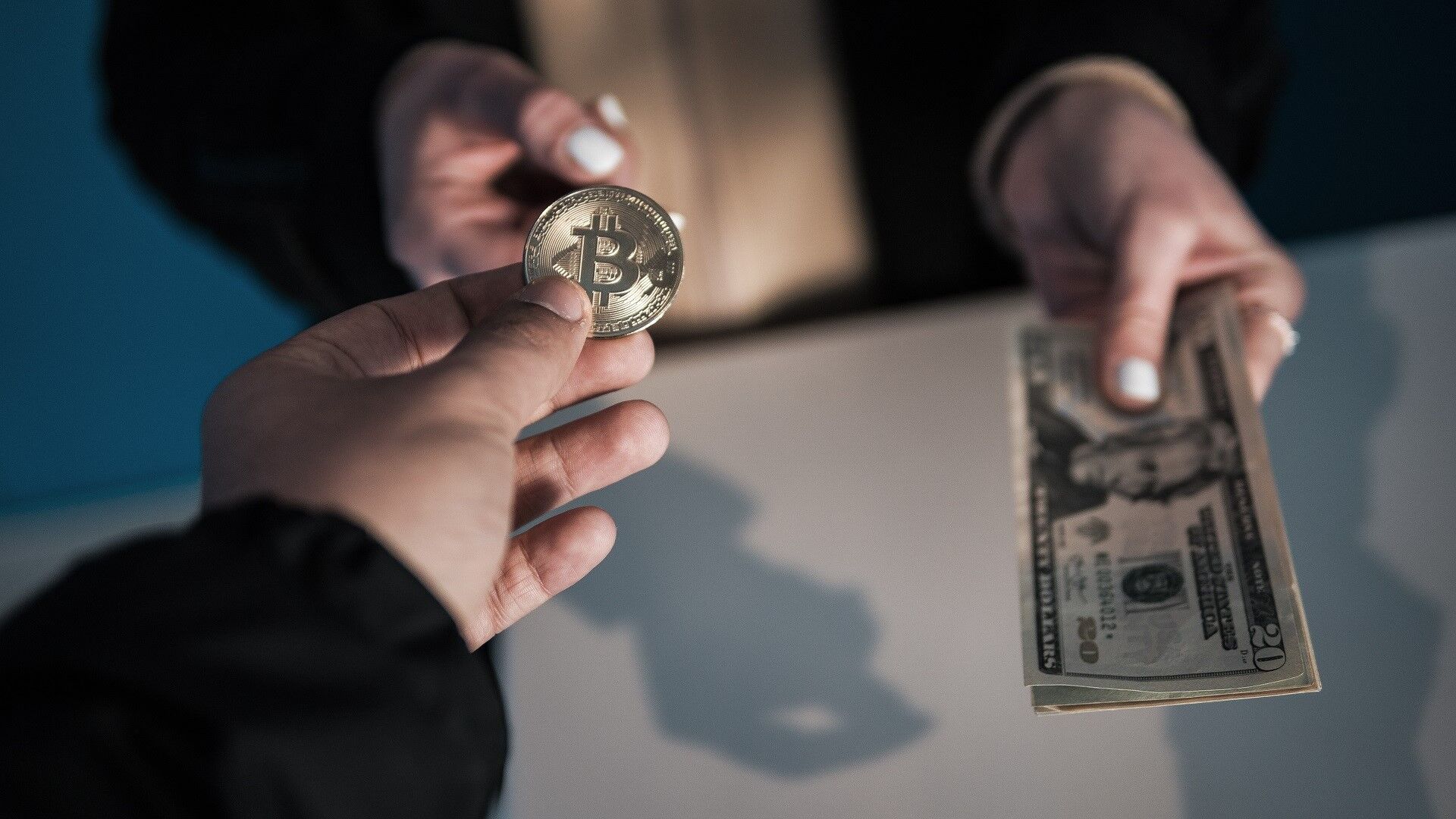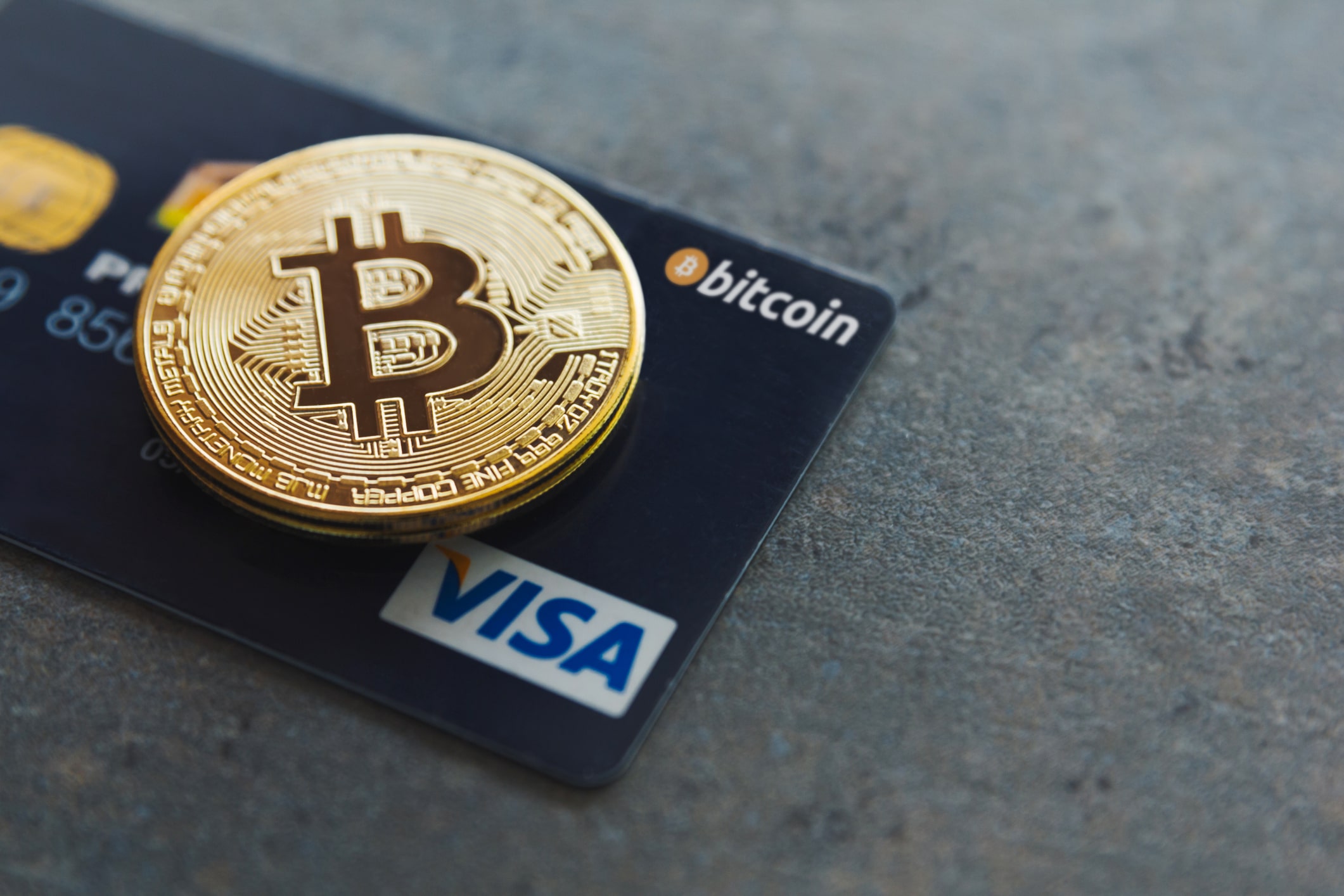Overview of Crypto ATMs
Crypto ATMs, also known as Bitcoin ATMs or BTMs, are physical kiosks that allow users to buy or sell cryptocurrencies using cash or a debit card. These ATMs are similar to traditional ATMs, but instead of dispensing cash, they facilitate transactions with digital currencies.
One of the key features of crypto ATMs is their ability to provide users with a simple and convenient way to enter the world of cryptocurrencies. Unlike online exchanges, which often require lengthy registration processes and complicated verification procedures, crypto ATMs allow anyone to buy or sell digital currencies with just a few simple steps.
Using a crypto ATM is typically straightforward. Users approach the machine and select the desired transaction, whether it’s buying or selling cryptocurrencies. They then follow the on-screen instructions to enter the transaction details, such as the amount of funds to be exchanged and the wallet address for receiving or sending the cryptocurrencies.
Once the transaction is confirmed, the crypto ATM will either dispense the purchased cryptocurrencies in the case of a buy transaction or provide a receipt with a redemption code that can be used to withdraw cash in the case of a sell transaction. Some crypto ATMs also offer the option to send cryptocurrencies directly to a digital wallet, eliminating the need for a physical receipt.
It’s important to note that crypto ATMs are not only limited to Bitcoin. While Bitcoin is the most widely supported cryptocurrency at these ATMs, many machines also support other popular digital currencies like Ethereum, Litecoin, or Bitcoin Cash. The availability of different cryptocurrencies at crypto ATMs varies depending on the operator and the location of the machine.
Crypto ATMs can be found in various locations, including convenience stores, shopping malls, and airports. The increasing popularity of these machines has led to a growing number of operators and an expanding network of crypto ATMs globally.
Overall, crypto ATMs provide a user-friendly and accessible way for individuals to buy and sell cryptocurrencies. They offer a bridge between the physical world and the digital realm of cryptocurrencies, enabling people to participate in the crypto economy without the need for online exchanges or extensive technical knowledge.
How to Use a Crypto ATM
Using a crypto ATM may seem daunting at first, but it’s actually a simple process. Here are the general steps to follow when using a crypto ATM:
- Find a Crypto ATM: Use an online directory or a dedicated mobile app to locate a crypto ATM near you. Ensure that the ATM supports the cryptocurrency you want to buy or sell.
- Bring Your Wallet: Make sure you have a cryptocurrency wallet installed on your smartphone or a hardware wallet with you. This will be needed to store the cryptocurrencies you purchase.
- Select the Desired Transaction: When you’re at the crypto ATM, select the appropriate option for the transaction you want to make, whether it’s buying or selling cryptocurrencies.
- Choose the Cryptocurrency: Select the cryptocurrency you want to buy or sell from the available options on the ATM’s interface.
- Enter the Transaction Details: Follow the on-screen instructions to enter the transaction details, such as the amount of cryptocurrency you want to buy or sell and your wallet address for receiving or sending the funds.
- Verify Your Identity: Some crypto ATMs may require you to verify your identity, especially for larger transactions. This might involve scanning your ID document or providing your phone number for verification purposes.
- Insert Cash or Debit Card: If you’re buying cryptocurrency, insert the cash into the ATM or swipe your debit card for the corresponding amount. Be aware that there may be transaction fees associated with the use of a debit card.
- Confirm the Transaction: Review the transaction details displayed on the ATM’s interface and confirm the transaction to proceed.
- Wait for Confirmation: The crypto ATM will process the transaction and complete the necessary blockchain confirmations. This may take a few minutes, so be patient.
- Receive Your Cryptocurrency: Once the transaction is confirmed, the crypto ATM will dispense the purchased cryptocurrencies or provide you with a printed receipt containing redemption instructions.
- Secure Your Cryptocurrency: After receiving your cryptocurrencies, make sure to transfer them to your secure digital wallet as soon as possible. This ensures that you have complete control over your funds and reduces the risk of loss.
Remember to double-check all transaction details before confirming the transaction at a crypto ATM. Mistakes can be costly, as blockchain transactions are irreversible. If you encounter any issues during the process, most crypto ATMs have customer support contact information displayed on the machine for assistance.
Using a crypto ATM offers a convenient and accessible way to buy or sell cryptocurrencies. It eliminates the need for complicated online processes and allows users to instantly exchange cash for digital assets.
Finding a Crypto ATM Near You
Finding a crypto ATM near you is easier than you might think. Here are a few ways to locate the nearest crypto ATM:
- Online Directories: Several online directories and websites provide comprehensive lists of crypto ATM locations. Examples include Coin ATM Radar, CoinFlip, and CoinATMRadar. These platforms allow you to search for ATMs based on your location or specific cryptocurrency preferences.
- Mobile Apps: There are mobile apps specifically designed to help users find nearby crypto ATMs. These apps provide real-time information about the nearest machines, along with details such as supported cryptocurrencies, operational status, and fees.
- Operator Websites: If you know the operator of a specific crypto ATM, visiting their website can provide you with information about other ATMs in their network. Many operators have interactive maps or search functions that allow you to easily find ATMs within their network.
- Social Media Groups: Engaging in cryptocurrency-related social media groups or forums can be a great way to get insights from fellow enthusiasts about the location of crypto ATMs. Users often share their experiences and provide updates on newly installed machines or changes in ATM availability.
- Local Meetups and Events: Attending local crypto-themed meetups, conferences, or events can present an opportunity to network with individuals who are knowledgeable about the presence of crypto ATMs in your area. They may be able to provide valuable information or firsthand experiences with ATMs.
When searching for a crypto ATM, keep in mind that their availability may vary depending on your geographic location. Major cities tend to have a higher concentration of ATMs, while rural areas may have fewer options. It’s recommended to check the reliability and reputation of the ATM operator as well, to ensure a secure and reliable transaction.
Additionally, consider aspects such as the operating hours of the ATM and any applicable transaction fees. Some ATMs may have limited hours of operation, so plan accordingly to avoid disappointment. Moreover, be aware that crypto ATMs often charge transaction fees that can vary depending on the operator and the nature of the transaction (buying or selling).
By utilizing these methods, you’ll be able to locate a crypto ATM near you with ease. Access to a nearby crypto ATM enables you to conveniently convert cash into cryptocurrencies or vice versa, opening up new possibilities for your digital asset journey.
Security Measures at Crypto ATMs
When it comes to using crypto ATMs, ensuring the security of your transactions and personal information is essential. Here are some common security measures implemented by crypto ATM operators to protect users:
- Encryption: Crypto ATMs employ strong encryption protocols to protect sensitive data during transactions. This ensures that your personal information and wallet addresses remain secure.
- Two-Factor Authentication (2FA): Some crypto ATMs support two-factor authentication, which adds an extra layer of security to the transaction process. This typically involves entering a unique verification code sent to your mobile device.
- Physical Security: Crypto ATMs are often placed in secure locations, such as well-monitored stores, malls, or public spaces. The machines themselves are built with robust materials and feature tamper-resistant designs to deter theft or unauthorized access.
- Transaction Limits: To prevent large-scale fraud or money laundering, crypto ATMs usually impose transaction limits. These limits may vary depending on the operator, the type of transaction, and regulatory requirements.
- Identity Verification: In some instances, crypto ATMs may require users to verify their identity before conducting certain transactions. This can help to prevent unauthorized use and ensure compliance with relevant anti-money laundering (AML) and know your customer (KYC) regulations.
- Receipts and Transaction Details: Crypto ATMs provide users with receipts that contain relevant transaction details. These receipts serve as proof of the transaction and can be used for record-keeping or dispute resolution purposes.
- Screen Privacy: Crypto ATMs are designed with privacy in mind. The screens are often positioned in such a way that they are difficult for others to view, ensuring that your transaction details remain confidential.
- Regular Maintenance and Updates: Responsible crypto ATM operators conduct regular maintenance and software updates to ensure the machines are functioning properly and are protected against potential vulnerabilities.
- User Education: Many crypto ATM operators provide educational materials or on-screen prompts to guide users through the transaction process. These resources help users understand the potential risks and best practices for using the machines securely.
While crypto ATMs are designed to be secure, it’s important for users to take additional precautions to protect themselves. This includes keeping their wallet addresses private, using secure and updated wallets, and regularly monitoring their cryptocurrency transactions for any suspicious activity.
By being aware of the security measures implemented by crypto ATM operators and following best practices for protecting your own information, you can confidently use these machines to buy or sell cryptocurrencies with peace of mind.
Transaction Fees and Limits
When using crypto ATMs, it’s essential to understand the transaction fees and limits associated with buying or selling cryptocurrencies. Here are some important points to consider:
Transaction Fees: Crypto ATMs charge fees for their services, which can vary depending on the operator and the specific machine. These fees typically cover the costs of maintaining the ATM, processing the transaction, and providing liquidity for the cryptocurrency exchange. Fees are usually displayed on the ATM’s interface before you confirm the transaction. It’s important to note that these fees can be higher compared to online exchanges, reflecting the convenience and accessibility provided by the physical ATM.
Percentage or Fixed Fee: Crypto ATM fees can be structured either as a percentage of the transaction amount or as a fixed fee. Some operators may have a combination of both types, depending on the transaction size. Percentage-based fees are calculated based on the total value of the transaction, while fixed fees remain the same regardless of the transaction amount.
Transaction Limits: Crypto ATMs typically impose transaction limits to comply with regulatory requirements and prevent misuse. These limits can vary depending on the operator, the type of transaction (buy or sell), and the regulatory environment in which the ATM is operating. Limits can include daily, weekly, or monthly transaction volumes. It’s important to be aware of these limits to plan your transactions accordingly. If you need to conduct larger transactions, you may need to visit an ATM with higher limits or consider using an online exchange.
Verification Requirements: Some crypto ATMs may require users to verify their identity before conducting transactions that exceed certain limits. This is often part of the operator’s compliance with anti-money laundering (AML) and know your customer (KYC) regulations. The verification process may involve providing identification documents or completing additional steps to confirm your identity.
Additional Charges: In addition to the transaction fees, there may be additional charges associated with using a crypto ATM. For example, if you use a debit card for transactions, the ATM operator may impose additional fees. It’s important to carefully review any additional charges before confirming the transaction.
When planning to use a crypto ATM, it’s advisable to research the fee structure and transaction limits of different ATMs. This can help you choose an ATM that aligns with your transaction needs and budget. Additionally, staying updated on the latest fee information and any changes in transaction limits is crucial to avoid any surprises during your transactions.
Understanding the transaction fees and limits of crypto ATMs allows you to make informed decisions and manage your cryptocurrency transactions efficiently.
Popular Cryptocurrencies Supported by ATMs
With the growing popularity of cryptocurrencies, crypto ATMs have expanded their support beyond just Bitcoin. Today, many crypto ATMs offer support for a wide range of popular digital currencies. Here are some of the most commonly supported cryptocurrencies:
- Bitcoin (BTC): As the first and most well-known cryptocurrency, Bitcoin is widely supported by crypto ATMs. It is often the primary currency available for buying and selling at these machines.
- Ethereum (ETH): Ethereum, known for its smart contract capabilities and decentralized applications, is another popular cryptocurrency supported by many crypto ATMs. It offers users a wide range of possibilities beyond simple transactions.
- Litecoin (LTC): Litecoin, often referred to as the “silver to Bitcoin’s gold,” is a fast and efficient cryptocurrency. Many crypto ATMs include support for Litecoin, providing users with an alternative option for transactions.
- Bitcoin Cash (BCH): Bitcoin Cash, a hard fork of Bitcoin, aims to offer faster and cheaper transactions. It has gained its own following and is supported by an increasing number of crypto ATMs.
- Ripple (XRP): Ripple is a digital currency that focuses on fast and low-cost international money transfers. Although less commonly supported than Bitcoin or Ethereum, some crypto ATMs include support for Ripple.
- Stellar (XLM): Stellar is a blockchain platform designed to facilitate fast and low-cost cross-border transactions. It has gained popularity for its focus on financial inclusion and is supported by select crypto ATMs.
- Cardano (ADA): Cardano is a blockchain platform that aims to provide a secure and scalable infrastructure for the development of decentralized applications. Some crypto ATMs have started to support Cardano as well.
- Dash (DASH): Dash is a digital currency that offers enhanced privacy and speedy transactions. It is supported by certain crypto ATMs that cater to users interested in privacy-focused cryptocurrencies.
- Monero (XMR): Monero is a privacy-focused cryptocurrency known for its untraceable and fungible nature. While not as widely supported as other cryptocurrencies, some crypto ATMs offer support for Monero.
- Many More: In addition to the aforementioned cryptocurrencies, there are numerous other altcoins that may be supported by specific crypto ATMs. These include but are not limited to EOS, TRON, NEO, and Dogecoin.
The availability of specific cryptocurrencies at crypto ATMs may vary depending on the operator and their network. Before visiting a crypto ATM, it’s advisable to check their website or use an online directory to confirm which cryptocurrencies are supported at the particular locations you are considering.
As the cryptocurrency market continues to evolve, it’s likely that more cryptocurrencies will be supported by crypto ATMs in the future. This expanding range of supported cryptocurrencies provides users with greater choices and flexibility when it comes to buying and selling digital assets.
Pros and Cons of Using Crypto ATMs
While crypto ATMs offer a convenient way to buy and sell cryptocurrencies, it’s important to consider both the advantages and disadvantages before using them. Here are some of the pros and cons of using crypto ATMs:
Pros:
- Accessibility: Crypto ATMs provide a physical presence for individuals who prefer a more tangible way to engage with cryptocurrencies. They offer a simple and straightforward process for buying or selling digital assets, making it easier for newcomers to enter the crypto market.
- Convenience: Crypto ATMs are typically available 24/7, allowing users to conduct transactions at their own convenience. This eliminates the need to rely on traditional banking hours or online exchanges with limited accessibility.
- Simplified Process: Using a crypto ATM is relatively easy, requiring only a few steps to complete a transaction. The on-screen instructions guide users through the process, making it accessible even for those with limited technical knowledge.
- Privacy: Crypto ATMs offer a certain level of privacy as they allow users to buy or sell cryptocurrencies without the need for extensive identity verification processes. While some ATMs may require identity verification for larger transactions, smaller transactions can often be conducted anonymously.
- Instant Transactions: Unlike traditional bank transfers or online exchanges that can take time to process, crypto ATM transactions are usually instantaneous. This allows users to quickly acquire or dispose of cryptocurrencies without having to wait for confirmation.
Cons:
- Higher Fees: Crypto ATMs typically charge higher fees compared to online exchanges. These fees cover the convenience and operational costs associated with maintaining the physical machines. Users should be aware of the fees involved to avoid any surprises during the transaction.
- Limited Availability: While the number of crypto ATMs is growing, their availability is still limited in many regions. Rural areas might have fewer options, making it less convenient for individuals living outside major cities to access a nearby ATM.
- Transaction Limits: Crypto ATMs often impose transaction limits to comply with regulations and prevent fraud. These limits can vary depending on the operator and regulatory requirements, and they may restrict the amount of cryptocurrency that can be bought or sold in a single transaction.
- Lack of Customer Support: If any issues arise during a transaction or if assistance is needed, some crypto ATMs may have limited customer support options. This can be problematic if there are discrepancies or problems with the transaction process.
- Market Volatility: Cryptocurrency prices are known for their volatility. When using a crypto ATM, it’s important to consider the market conditions and purchase or sell cryptocurrencies accordingly. Prices can fluctuate significantly between the time of initiating the transaction and its completion.
Ultimately, whether using a crypto ATM is the right choice depends on an individual’s preferences and circumstances. For those seeking a convenient and accessible option to enter the world of cryptocurrencies, crypto ATMs can provide a user-friendly experience. However, it’s important to weigh the pros and cons to make an informed decision that aligns with one’s needs and financial goals.
Future Trends of Crypto ATMs
Crypto ATMs have seen significant growth and evolution since their inception, and there are several emerging trends that are shaping the future of these machines. Here are some notable trends to watch out for:
- Increased Global Adoption: As cryptocurrencies continue to gain mainstream acceptance, the demand for crypto ATMs is expected to increase globally. More countries are likely to embrace digital currencies, leading to a surge in the number of crypto ATMs worldwide.
- Integration of More Cryptocurrencies: While Bitcoin remains the dominant cryptocurrency supported by crypto ATMs, there is a growing trend of adding support for additional digital assets. As the market expands and more cryptocurrencies gain popularity, we can expect to see an increasing variety of supported coins at crypto ATMs.
- Advanced Security Features: With the rising concern for security in the cryptocurrency space, future crypto ATMs are expected to incorporate advanced security features. These may include biometric authentication, multi-factor authentication, and enhanced encryption protocols to provide users with a higher level of security.
- Improved User Experience: Future crypto ATMs are likely to focus on enhancing the user experience by offering more intuitive interfaces and simplified transaction processes. This can attract a wider range of users, including those who are not well-versed in cryptocurrency technology.
- Integration of AML and KYC Compliance: To align with evolving regulatory requirements, crypto ATMs will likely integrate more robust AML (anti-money laundering) and KYC (know your customer) protocols. This will help prevent illicit activities and ensure compliance with regulatory frameworks in different jurisdictions.
- Enhanced Functionality: Crypto ATMs may expand their functionality beyond buying and selling cryptocurrencies. Future machines could potentially offer additional services, such as cryptocurrency transfers, bill payments, or even digital asset staking options, further bridging the gap between traditional financial services and the crypto space.
- Integration with Mobile Wallets: As mobile wallets gain popularity, we can expect future crypto ATMs to offer seamless integration with these wallets. This can streamline the transaction process by allowing users to initiate transactions directly from their mobile devices.
- Wider Location Coverage: Crypto ATMs are likely to become more geographically accessible, with machines popping up in more diverse locations including smaller towns and rural areas. This will democratize access to cryptocurrencies and make them more easily available to a broader range of individuals.
- Regulatory Clarity and Compliance: As governments around the world develop clearer regulations and guidelines for cryptocurrencies, crypto ATM operators will increasingly prioritize regulatory compliance. This will contribute to greater trust in the crypto ATM industry and foster mainstream adoption.
These trends are indicative of the evolving landscape surrounding crypto ATMs. As technology continues to advance, and cryptocurrencies become more integrated into everyday life, the future of crypto ATMs looks promising. These machines are playing a crucial role in enabling broader access to digital currencies and facilitating the seamless exchange of value in the digital economy.
Conclusion
Crypto ATMs have emerged as a convenient and accessible way for individuals to buy and sell cryptocurrencies. These physical kiosks provide a bridge between the digital world of cryptocurrencies and the traditional realm of cash transactions. By simplifying the process of acquiring digital assets, crypto ATMs have opened up new possibilities for individuals looking to participate in the crypto economy.
From the initial Bitcoin-focused machines, crypto ATMs have expanded their offerings, now supporting a wide range of popular cryptocurrencies like Ethereum, Litecoin, and Bitcoin Cash. This growing support for multiple coins has increased the options available to users and boosted their flexibility when transacting through these machines.
While there are advantages to using crypto ATMs, it’s important to consider the accompanying fees, transaction limits, and the potential lack of customer support. These factors vary depending on the operator and the specific machine, so it’s crucial to research and choose an ATM that aligns with your needs.
Looking ahead, the future of crypto ATMs appears promising. The integration of more cryptocurrencies, advanced security features, improved user experience, and enhanced functionality are evolving the landscape of these machines. Additionally, wider location coverage and increased regulatory compliance will further contribute to the mainstream adoption of crypto ATMs.
As cryptocurrencies continue to grow in popularity, crypto ATMs will play a significant role in providing individuals with a familiar and convenient means of entering the world of cryptocurrencies. These machines serve as gateways, connecting users to the digital asset ecosystem and offering a tangible way to convert cash into cryptocurrencies and vice versa.
While unique challenges may arise, such as the volatility of cryptocurrency prices and the need to stay informed about transaction fees and limits, crypto ATMs provide a valuable service to both new and experienced users in the ever-expanding crypto landscape.
Whether you’re looking to make your first cryptocurrency purchase or seeking a convenient way to exchange digital assets, crypto ATMs offer a user-friendly and accessible option. By staying informed about the latest trends and developments in the crypto ATM space, you can effectively leverage these machines to navigate the exciting world of cryptocurrencies.

























